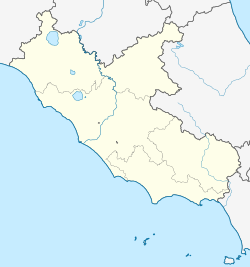
Pico is a town and comune in the province of Frosinone, in the Lazio region of central Italy. It is bounded by other comunes of San Giovanni Incarico, Campodimele, Pontecorvo, Pastena and Lenola.

Belluno is a town and province in the Veneto region of northern Italy. Located about 100 kilometres north of Venice, Belluno is the capital of the province of Belluno and the most important city in the Eastern Dolomites region. With its roughly 36,000 inhabitants, it is the largest populated area of Valbelluna. It is one of the 15 municipalities of the Dolomiti Bellunesi National Park.
Ordona is a small town and comune of the province of Foggia in the region of Apulia in southern Italy.
Sezze is a town and comune in the Province of Latina, central Italy, about 65 kilometres (40 mi) south of Rome and 10 kilometres (6 mi) from the Mediterranean coast. Sezze's historical center of is on a high hill commanding the Pontine plain.

Pietradefusi is a comune in the province of Avellino, Campania, Italy.
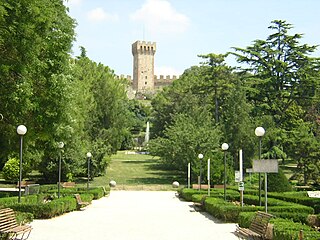
Este is a town and comune of the Province of Padua, in the Veneto region of northern Italy. It is situated at the foot of the Euganean Hills. The town is a centre for farming, crafts and industry worthy of note.

Collesano is a small town in the Metropolitan City of Palermo, Sicily. It is situated roughly 70 kilometres from the provincial capital of Palermo. It lies in the Madonie Park between the hills and the Tyrrhenian Sea and is also on the Targa Florio racing circuit since its beginning (1906). The town owns the official Targa Florio Museum.

Carsoli is a town and comune in the province of L'Aquila, Abruzzo. The ancient Roman city lies 4 kilometres (2.5 mi) southwest of the modern town.

Macchia Valfortore is a town and comune in the Province of Campobasso, Molise, southern Italy.

Pagani is a town and comune in Campania, Italy, administratively part of the Province of Salerno, in the region known as the Agro nocerino-sarnese. Pagani has a population of 35,834, as of 2016.

Priverno is a town, comune in the province of Latina, Lazio, central Italy. It was called Piperno until 1927.

Cori is a city and comune in the province of Latina, in the Lazio region of central Italy.

Castelforte is a town and comune in the province of Latina, in the Lazio region of central Italy. It is located at the feet of the Monti Aurunci massif.

Conza della Campania is a comune (municipality) and former Latin Catholic (arch)bishopric in the province of Avellino in the region of Campania in southern Italy.
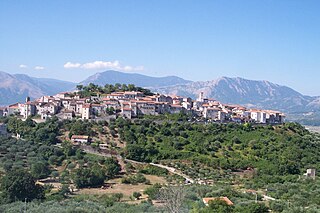
Atena Lucana is a town and comune in the province of Salerno in the Campania region of south-western Italy.
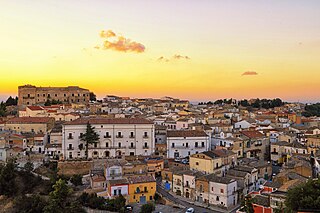
Ascoli Satriano is a town and comune in the province of Foggia in the Apulia region of southeast Italy. It is located on the edge of a large plain in Northern Apulia known as the Tavoliere delle Puglie.
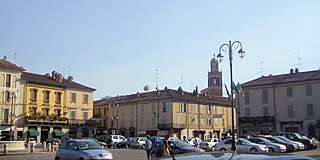
Casteggio is a comune (municipality) in the Province of Pavia in the Italian region Lombardy, located about 61 km south of Milan and about 25 km south of Pavia. As of 31 July 2010, it had a population of 6,537 and an area of 17.8 km².

Calendasco is a comune (municipality) in the Province of Piacenza in the Italian region Emilia-Romagna, located about 150 kilometres (93 mi) northwest of Bologna and about 9 kilometres (6 mi) northwest of Piacenza.

Maenza is a comune (municipality) in the Province of Latina in the Italian region Lazio, located about 70 km (43 mi) southeast of Rome and about 25 km (16 mi) east of Latina. It is home to a castle, originally built as a watchtower in the 12th–13th centuries, and enlarged in the 16th century. In an effort to bring in new residents, it is selling abandoned houses for €1 if buyers commit to renovations.

Aquino is a town and comune in the province of Frosinone, in the Lazio region of Italy, 12 kilometres (7 mi) northwest of Cassino.




